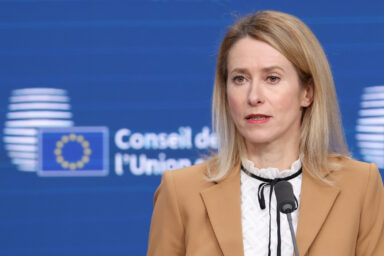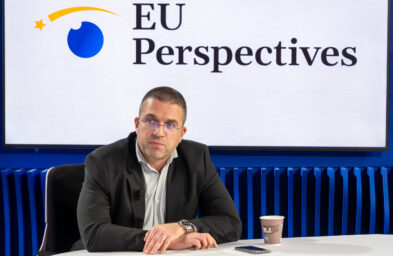The days of dangerous toys flooding the European market—and, subsequently, young European citizens‘ under-the-bed boxes—may soon be over. Intensified labelling and testing rules, along with the invention of digital product passports, are to build a robust bulwark against the unnoticed dangers of toy use, a widespread phenomenon across the EU.
Members of the Council set aside political differences on 13 October to adopt its position on a new toy safety regulation. It is designed to tighten chemical limits, shore up enforcement and introduce digital product passports for all toys. The text, Regulation on Toy Safety, is to replace a similar 2009 directive, and raising protection for children against a wider set of hazardous substances. Member states agreed a transition period of four and a half years to give industry time to adapt.
Safety first, second, and third
The regulation bars or restricts endocrine disruptors, certain skin sensitisers, biocidal products and many PFAS. It also forbids a set of 10 bisphenols and narrows allowances for carcinogenic, mutagenic and reproductive toxins. Toys with biocidal functions will generally be banned and treatments with biocidal products will be forbidden except for items permanently placed outdoors.
The measure extends labelling and testing duties. Manufacturers must carry out the full battery of safety assessments—chemical, physical, mechanical, electrical, flammability, hygiene and radioactivity—before placing toys on the market. CE marking remains compulsory to show conformity.
This is to ensure that the influx of mechanically unsound, flammable, and radioactive rubber ducks is finally stemmed under the gloriously eagle-eyed EU authorities‘ surveillance. It also conveniently serves the purpose of needling Beijing, as 80 per cent of the EU’s €7.1bn toy import comes from China (the figure refers to 2021). The Brussels parlance calls it “levelling the playing field for European manufacturers“ in the face of unsafe imports.
You might be interested
Chemicals (and duties) get tougher
The rules aim to tackle the chemical risk more broadly. In addition to previously banned substances, the Council now prohibits chemicals that disrupt endocrine systems or target specific organs. The text also limits preservatives and bans fragrance allergens in toys for children under three.
Warnings must be clearer. Manufacturers will have to mark warnings in an easily understandable way and inform downstream operators of conformity problems. Importers must notify producers and market surveillance authorities if they suspect a risk.
Online sales come under closer scrutiny. Importers will have to submit a digital product passport at the border for goods sold in traditional and online channels. Customs and surveillance authorities can scan passports with a new IT system to check compliance.
Passports and customs
The digital product passport (DPP) contains key safety information and aims to make enforcement faster and cheaper. It will apply to every toy entering the single market and to those sold online. The Commission and member states expect the DPP to reduce the number of non compliant toys in circulation.
The digital product passport is an EU‑driven tool to record compliance, composition and supply‑chain data for products entering and circulating in the single market. No globally harmonised DPP regime exists. Practically, that means divergent DPP rules could create extra compliance work for exporters and importers unless formats and access rules converge.
[The new rules] will provide wider information to consumers and help market inspectors to detect and remove dangerous toys, especially at EU borders — Stéphane Séjourné, Executive Vice-President for Prosperity and Industrial Strategy
The Council highlights the industry angle. The toy sector employs over 50,000 people, mostly in small and medium-sized enterprises, and the regulation aims to protect those jobs by curbing unfair competition from unsafe imports. The Council, however, kept a four and a half year transition window. Brussels says this will allow firms and customs authorities to adapt IT systems and compliance procedures without abrupt disruption to trade.
Market duties
The text clarifies responsibilities across the supply chain. Economic operators must pass conformity information along the distribution chain. Importers take on active duties to detect and report unsafe products. Market surveillance authorities gain easier access to compliance data via the DPP.
“The new rules make toys sold online and offline safer for children,” European Commissioner Stéphane Séjourné offered an observation earlier this year after the Commission announced the initiative. “They ban harmful chemicals and introduce a Digital Product Passport (which) will provide wider information to consumers and help market inspectors to detect and remove dangerous toys, especially at EU borders.”
Online marketplaces face specific obligations. Non-conforming toys will be treated as illegal content under the Digital Services Act framework, and platforms must enable the display of CE marks, warnings and links to the DPP on product pages. Interfaces must let sellers present required information before purchase.
Enforcement, jobs and the trade angle
The outcome is practical rather than ideological. It pairs higher safety standards with tools to enforce them at borders and online. The DPP is the key innovation—designed to make checks routine rather than exceptional. The risk for businesses lies in compliance costs and IT upgrades; the prize is a market with fewer unsafe toys and clearer rules for honest producers.
The Council’s position now moves to the European Parliament for approval. If MEPs agree, the regulation will enter into force after the transition period and replace the old directive—bringing a tighter chemical regime and a digital enforcement toolkit to the EU toy market.











